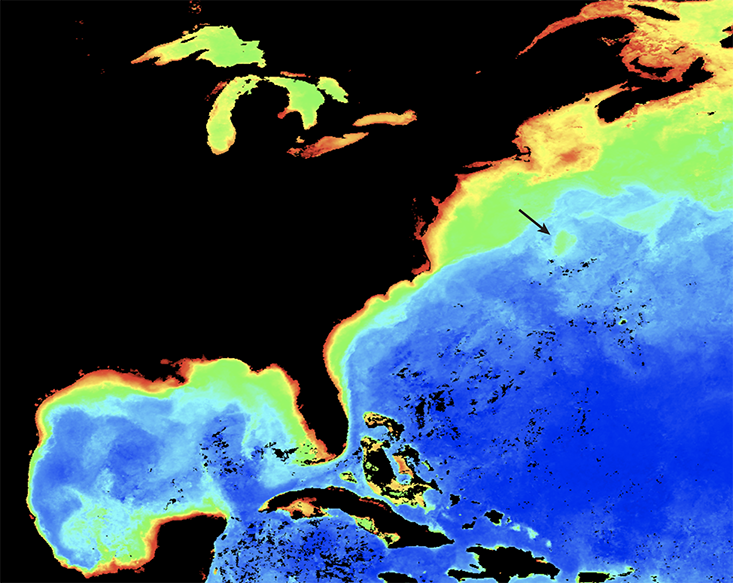ST. PETERSBURG, FL – Just like humans, microorganisms such as plankton and nitrogen-fixing bacteria which make up the base of the food chain in the ocean need the metal iron in order to survive. However, iron doesn’t dissolve in seawater, meaning that it can often severely limit life in the ocean. In the North Atlantic Ocean, large dust storms from the Sahara supply large amounts of iron-bearing desert dust to the surface, yet in places there may still be too little iron for life to grow. Understanding the role of metals in ocean ecosystems is thus a research priority for a number of faculty at the USF College of Marine Science, and internationally.
In a paper published in Nature Geoscience this week, CMS faculty member Dr Tim Conway and co-authors from ETH Zürich and the University of Rhode Island show for the first time that Gulf Steam eddies can provide an extra supply of iron, and nutrients such as phosphate and nitrate to the iron-starved Western Atlantic Ocean. These beautiful eddies are visible in satellite imagery (see NASA image) and commonly form when the northward fast-flowing Gulf Stream meanders and then pinches off coastal water, spinning these ‘rings’ out into the ocean. This coastal water is rich in iron. In collaboration with Dr Jaime Palter at URI and Dr Gregory de Souza at ETH, Dr Conway was able to make use of new satellite and ocean datasets and show that these eddies may be just as important than dust in supplying iron to this area of the ocean! The study also provides an important teleconnection between chemistry and pollution in the Gulf of Mexico and the Eastern seaboard with the open North Atlantic ocean, linking in with other work at USFCMS on the Gulf of Mexico.
